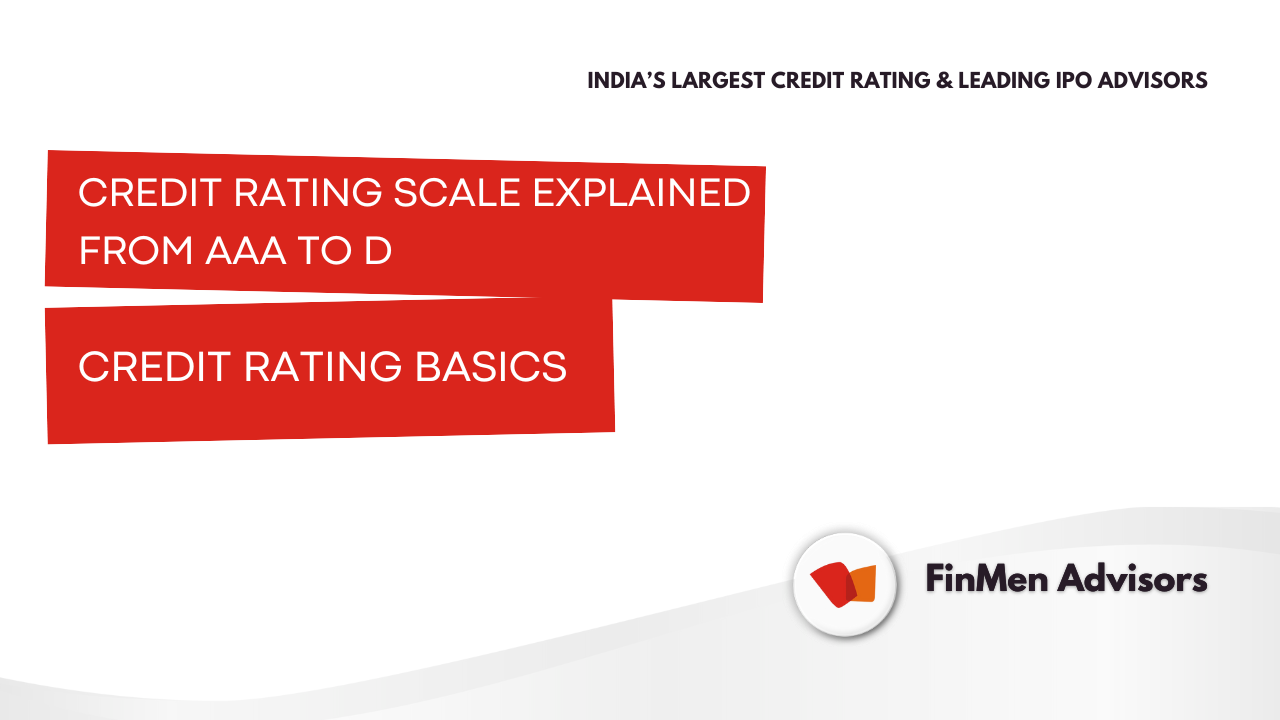Introduction
Credit ratings are a cornerstone of trust in the financial ecosystem. They provide investors, lenders, and stakeholders with an independent assessment of a company’s ability to meet its financial obligations. In India, where businesses across industries rely on external capital, understanding the credit rating scale is essential for informed financial decision-making.
As India’s Largest Credit Rating Advisory & Leading IPO Advisors, FinMen Advisors has worked with businesses across sectors to help them navigate rating complexities. This article simplifies the credit rating scale — from AAA to D — and explains why it matters.
What Is a Credit Rating Scale?
A credit rating scale is a standardized system used by credit rating agencies to assign symbols or grades that reflect the creditworthiness of an entity. These ratings help stakeholders gauge the risk of default on debt instruments, loans, or other financial obligations.
Long-Term Credit Rating Scale (AAA to D)
Here’s how the most widely used long-term rating scale is structured:
- AAA (Highest Safety):
Entities with the strongest financial health and lowest risk of default. Considered highly trustworthy. - AA (High Safety):
Very strong capacity to meet financial commitments, but slightly lower than AAA. - A (Adequate Safety):
Strong capacity, though more susceptible to adverse economic conditions. - BBB (Moderate Safety):
Considered adequate for investment but carries moderate credit risk. - BB (Moderate Risk):
More vulnerable to economic stress; speculative category begins here. - B (High Risk):
Significant vulnerability to default; financial stability is uncertain. - C (Very High Risk):
Poor financial health, extremely vulnerable to non-repayment. - D (Default):
Indicates the entity has defaulted on its debt obligations.
Short-Term Credit Rating Scale
Short-term instruments (like commercial papers) follow a different notation:
- A1+ / A1: Strongest capacity to meet short-term obligations.
- A2: Adequate safety but subject to more variation in economic stress.
- A3: Moderate degree of safety.
- A4: Susceptible to poor creditworthiness.
- D: Default.
Why the Rating Scale Matters
- For Investors: Provides clarity on the level of risk before investing.
- For Lenders: Acts as a benchmark for determining loan terms and interest rates.
- For Companies: Directly impacts fundraising ability, borrowing costs, and market credibility.
The Indian Context
In India, leading agencies like CRISIL, ICRA, CARE Ratings, India Ratings, and Brickwork Ratings use similar scales with slight variations in symbols. Businesses must understand these nuances to ensure they present themselves optimally during the rating process.
How FinMen Advisors Helps
At FinMen Advisors, we guide companies through every stage of the credit rating journey — from initial assessment to positioning and ongoing support. With 15+ years of expertise, 6,500+ assignments, and a pan-India presence, we ensure businesses are well-prepared and strategically represented before rating agencies.
FAQs
Q1: Are AAA ratings permanent?
No. Ratings are dynamic and can change based on a company’s financial performance and market conditions.
Q2: Can a company recover from a downgrade?
Yes. With better financial practices, improved disclosures, and strategic advisory, businesses can strengthen their ratings.
Q3: Do all agencies use the same scale?
Broadly yes, but symbols and modifiers may vary slightly across agencies.
Conclusion
Understanding the credit rating scale from AAA to D is vital for businesses and investors alike. While a high rating opens doors to easier funding, a downgrade can affect growth prospects. With the right strategy and expert guidance, companies can manage their ratings effectively.
As India’s Largest Credit Rating Advisory & Leading IPO Advisors, FinMen Advisors continues to empower businesses to navigate the credit rating ecosystem with confidence and credibility.


